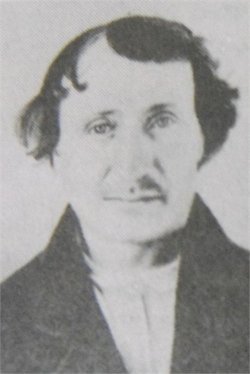My husband's great-grandmother, Mary Lucetta Case, was born on the old Case homestead, located between St. Joe and Spencerville, Indiana. The name CASE may still be spotted on the barn roof as one drives by. She arrived on November 16, 1848, one of the youngest of ten children.
Her parents, Caleb Case and Sophia Camp Case, were natives of New York,having moved to Indiana sometime between 1843 and 1847.
Mary lived her whole life in this area of Dekalb County, Indiana, marrying William Levi Hollabaugh on April 21, 1870, when she was 21.
Previous posts have described her husband, William Levi, and their eight children: Harriett, Bertha, Ernest, Geneva (grandmother), Clarence, Esther, Sylvia, and Stanley.
Mary's obituary appeared in the St. Joe News on September 10, 1914, following her death on September 6th.
"OBITUARY -
Mary L. Case Hollabaugh was born November 16, 1848, at the old Case home near Spencerville, Ind. She passed from this life after several weeks of severe sickness and suffering, September 6, 1914, at her late home at the age of 66 years, 10 months, 20 days.
The deceased was the daughter of Caleb and Sophia Camp Case, and was one of ten children, but two of whom survive her - a brother, E. Case, of Spencerville, Ind; and a sister, Mrs. Martha R. Dilley of Colorado.
She was married to William Hollabaugh on April 20, 1870. To them were born eight children, five daughters and three sons, one of the sons in his childhood having preceded his mother in death. The surviving children are: Mrs. Hattie Fairfield of Spencerville, Ind.; Mrs. Bertha Bridges of Mishawaka, Ind.; Earnest of Logansport, Ind.; Mrs. Eva Pflaumer of Spencerville, Ind.; Esther, still at home; Mrs. Sylvia Ginther of St. Joe, Ind.; and Stanley, also of St. Joe.
All her life has the deceased been a resident of this vicinity. Tweny years ago the family left the farm, where they had lived prior to that time, and have since resided at her late home here in St. Joe. At the age of 14 years, she became a member of the Lutheran church at Spencerville. Later this membership was transferred to the Lutheran church of St. Joe. Her education was received in the public schools of DeKalb county.
Her whole life has thus been lived amid the familiar walks and scenes and neighborly interests that her friends and neighbors know, of her kindly deeds and willing ministrations we need not speak here. Then there are those ministrations that are peculiar to the office of wife and mother, and in the flesh we have the privilege of but one mother. Her passing in death from the home and motherhood leaves the void of which so many of us know. To God, with her, we commend you all who mourn here today.
The surviving near kin are the husband, the seven children, the several grand-children, the brother and sister. Many other relatives and friends join you in thought and sympathy in this your day of bereavement and mourning. May that faith which overcomes the world with its vicissitudes comfort you all."
 |
| Riverside Cemetery, St. Joe, Indiana |
















